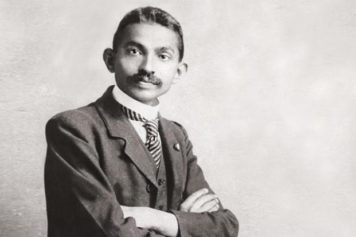
Ghana Supreme Court (Source: dilemma-x.net)
Although it has been a half-century since the British left Africa and Black people liberated themselves from colonial rule, some remnants of colonialism remain, and bad habits, apparently, are hard to break. A case in point is the continuing tradition of judges and lawyers in certain British commonwealth nations wearing white wigs made of horsehair. Despite the fact these wigs are conspicuous symbols of European colonial oppression — or perhaps because of it — the wigs remain popular among some jurists, and are still in use in former British colonies such as Ghana, Kenya, and Zimbabwe.
Uncomfortable relics of an era when white men were in control of African people and the laws that governed them, the horsehair wigs are unsuitable for the hot climate. Coming in yellow, blonde, gray and white, the wigs may not be aesthetically pleasing to African tastes, and designed for white people, do not reflect their hair color or texture. In addition, the head ornaments are costly, with a price tag in Uganda of $6,500 each.
At a time when African leaders rail against the colonialism of European powers, as the Washington Post reported, some judges such as new Kenyan chief justice David Maraga embrace the old traditions as a means of entrenching their power and maintaining symbols of authority. Maraga’s predecessor Willy Mutunga, encountered opposition when he loosened the dress code and removed the traditional English robes — which he replaced with Kenyan-style green and yellow robes — and the “dreadful” wigs.
Kenya’s legal profession is “tortured by the question of dress,” wrote Makau Mutua, a professor at SUNY Buffalo Law School and chair of the Kenya Human Rights Commission. Mutua says the British courtroom garb is associated with an “oppressive and unequal” social order in feudal Europe which lawyers and judges defended. “Every time I see a wig on a Kenyan judge or lawyer, I think of an American Halloween costume.”
As The Daily Graphic (Ghana) reported in 2014, use of the wigs and gowns may even play a role in preventing people from seeking redress in the courts and hindering their access to justice. “I am fully aware of the importance of the wig and the gown to the legal profession in Ghana, but I believe that if we are able to do away with the wearing of the wig and the gown in our courts, we will be taking away a greater part of the intimidation and fear that often characterise our courtrooms,” said Augustine Niber, Executive Director of the Centre for Public Interest Law (CEPIL) in Ghana. He said that for the marginalized, the court system is often perceived as expensive and out of reach, slow, remote and impossible to understand.
The British court system, of which the horsehair wig was a potent symbol, was brutal to African people. For example, while Britain gave reparations to 46,000 British slave owners after slavery was abolished in 1833, it represented the largest single bailout in the nation’s history up until the 2009 bank bailout. However, no African nation received reparations for British slave trading. Further, the British colonial legal system served the economic and military interests of the conquerors. During the Mau Mau rebellion in Kenya in the 1950s, thousands were detained, abused and tortured, and more than 1,000 were sentenced to death and executed.
The courtroom wigs were officially adopted in Britain in the late seventeenth century as a reflection of the popularity of the wigs as a fashion statement in the larger culture. It all began with King Louis XIV in France — who likely lost his hair to syphilis at age 18 and established the first wigmaker’s guild in Europe in 1655. Charles II of England, Louis’ cousin, also followed suit and wore a wig when his hair turned gray. The wigs were fashionable but also viewed as practical, as they were used to address the infestation of head lice. People would shave their head and wear the wig, where the lice would congregate instead, and the wig would be subsequently boiled to remove the lice and eggs.
While Canada and some other Commonwealth nations parted ways with the wigs, other former members of the British Empire have retained the tradition. In 2007, even the British judiciary announced that judges and lawyers would no longer wear the wigs in civil or family court cases, but would still be worn in criminal cases. In Jamaica, judges ditched the wigs and long, red royal-style robes in 2013, opting instead for lighter weight black robes with vertical black, green and yellow lines symbolizing the colors of the national flag. Judges in the Caribbean nation of the Bahamas still don the wigs, reportedly out of a sense of decorum and respect for the process, not unlike the formality of a suit and tie. In Bermuda, a British Overseas Territory, wigs and gowns are no longer worn in Commercial Court as of 2008 but are still part of official attire for judges and lawyers in senior courts such as Bermuda’s Supreme Court. This issue came to light in 2014 when a court justice abruptly ended a hearing in a fraud case because the attorney for the convicted man appeared in court without the required horsehair wig and gown.
While the colonization of a people involves land theft, plunder and the exploitation of people and their natural resources, a colonization of the mind also takes place. In this case, a most conspicuous symbol of that process sits on top of one’s head. The calls for African nations to adopt new systems, styles, processes and symbols that reflect the needs and culture of their people will continue.


